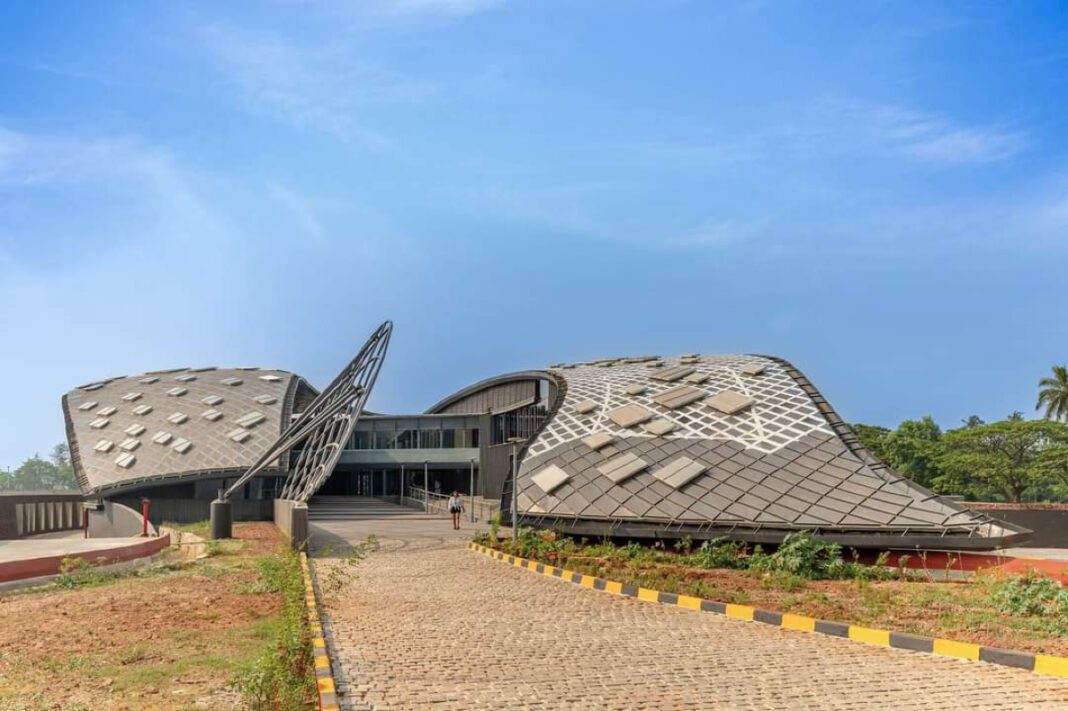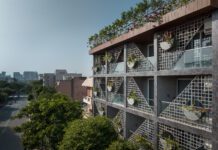Southeast Asia’s only water sports institute in Goa, is a state-of-the-art structure spread over a stretch of 90,000 sq ft. The National Institute of Watersports (NIWS) is a government institute which offers MBAs, PhDs, diplomas and degrees in luxury and tourism water sports. Training for windsurfing, sailing, rafting, kayaking, waterskiing, scuba diving, and parasailing are the facilities that are available at this institute. This building includes a boathouse, an Olympic-sized swimming pool, workshops, and an amenities building with administrative offices, such as faculty areas, classrooms, a training hall and a cafeteria.
The main building of NIWS has been designed in four sections, such as the hostel building, faculty building, administrative building, and amenities building, with expansion joints which separate them from one another.
The primary frames have been designed according to both the buildings which consist of special moment resisting. The four buildings are connected through a composite bridge from the first floor and a reinforced concrete bridge spans the gap between the campus entry to the amenity building.
Anand Shah, Director, DELF Consulting Engineers Pvt Ltd and Prashant Singhi, Principal Engineer, Jade Consultants delve into the project.
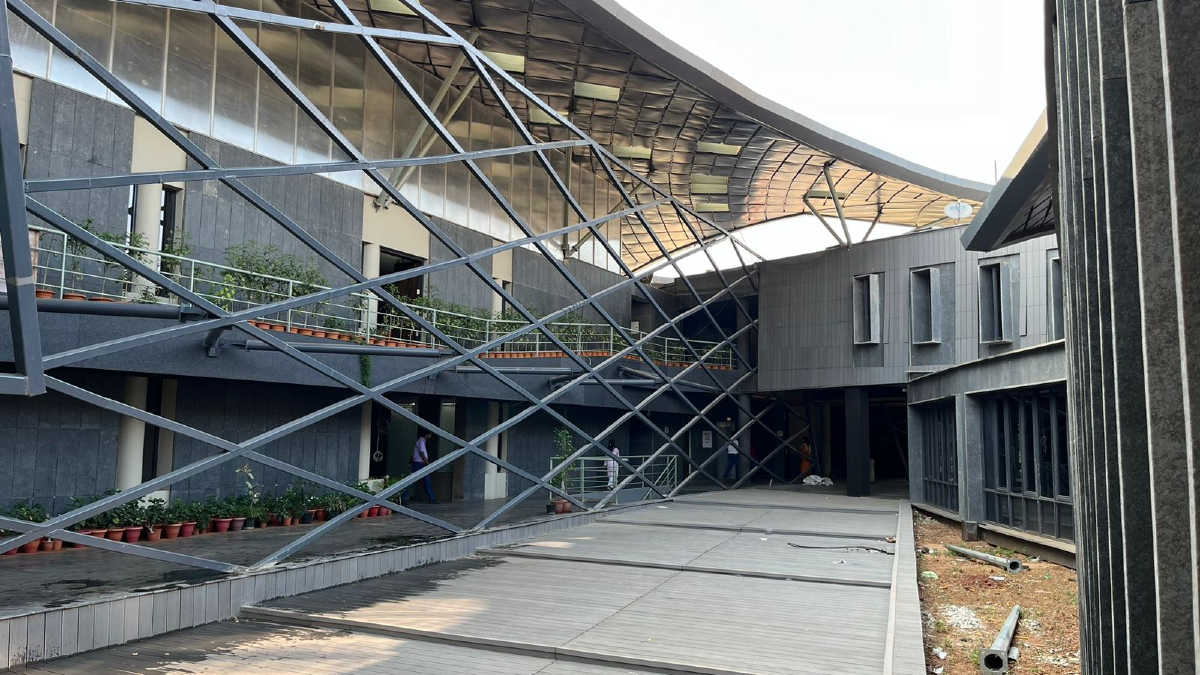
Defying Gravity
Multiple sections of the NIWS’ main building are covered with doubly curved steel with a space (2D/3D) frame structure. The roof is made of composite structure with the use of aluminium sections which have been placed above the primary and secondary steel members to support the sheeting. These sections are connected in order to transfer loads and achieve a composite effect, which will help improve deflection control and overall economy.
The structure of NIWS is said to be lightweight, which in turn helped incorporate a pressure equalisation system. Thick corten steel panels have been fixed on a structural steel framework, and 50 x 100 mm MS Box sections have been rested on the slab of each floor at a distance of 1800 mm c/c. Perforated corten steel sunscreen filters have been optimised to control sunlight into the interiors.
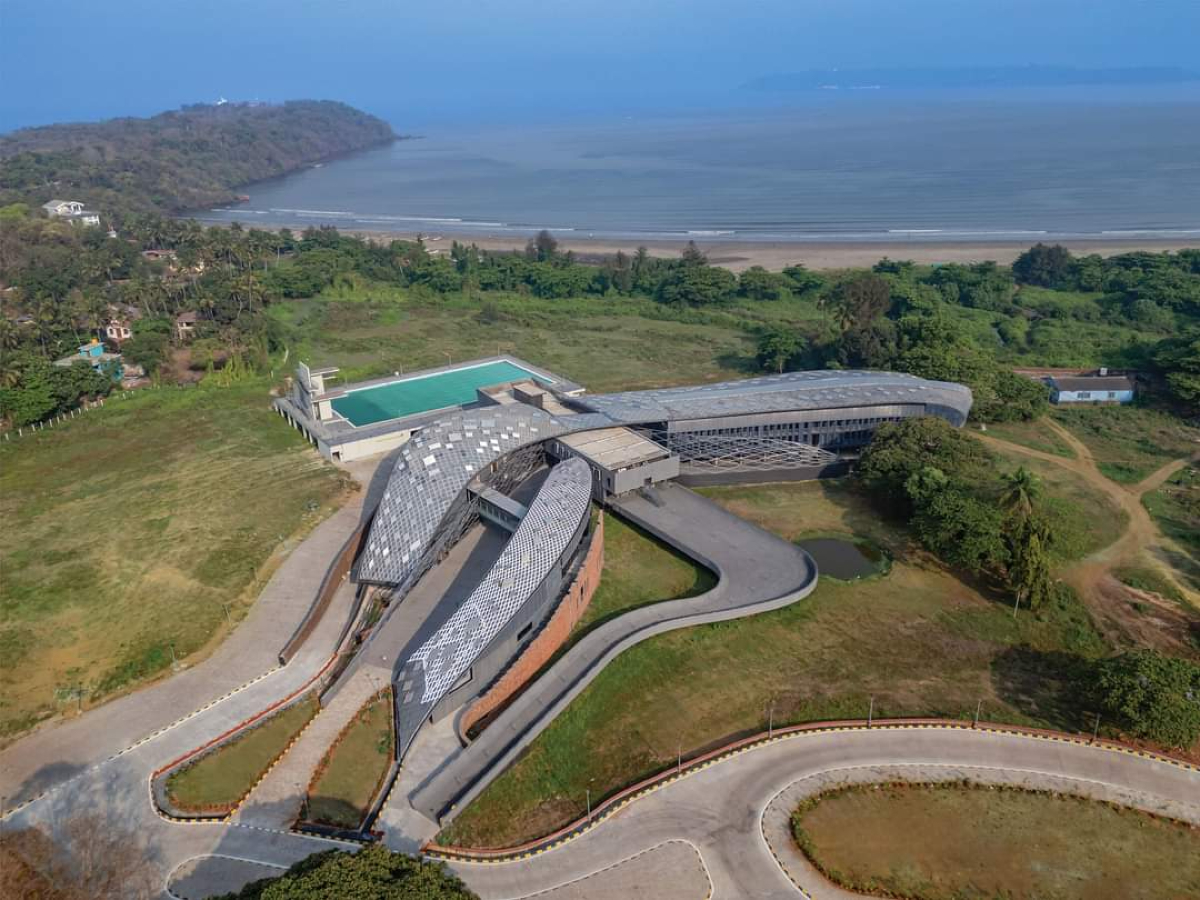
A Sustainable Shield
Facade panes have been used as a solution for prevention from rain, wind, and aid. And to manage the wind pressure the institute has been designed as two parallel parametric grid roofs with a continuous gap in between. This concept has been reflected in the sinusoidal design of the roof, which is a grid shell structure built using trapezoidal panels. The whole of the 4,000 sq ft roof covers the entire complex like a flowing fabric.
The structure of the roof was supported on flower pattern steel bracing members rating on RCC Columns at the terrace level. Since the structure is located in a high seismic zone, IRS of 345 MPa were confirmed to IS 2062 and finished with a corrosive epoxy coating. For the optimisation of the structure, various circular, square and rectangular hollow sections of 310 MPa were used to support the roof. Specialised four-sided bracket-creating pin connectors were designed, fabricated, and executed at the site to support the other supporting members of the main roof.
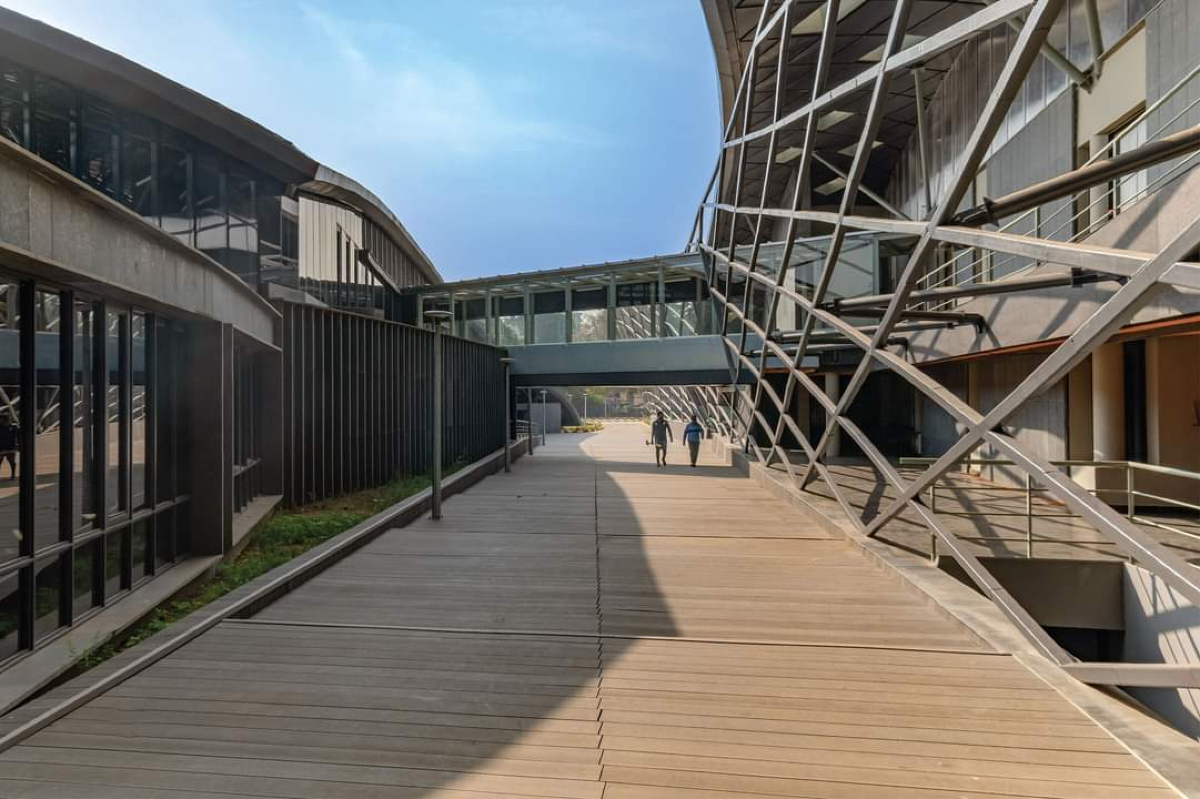
Overcoming the odds
One of the main challenges was to support the double-curved steel roof and wall surfaces with the reinforced concrete substructure and foundations. After evaluating multiple options, a grid shell structure and a natural tree form were adopted for analysing and designing the roof’s primary members resting on central steel columns.
The fabrication of the steel roof was another major challenge as it comprised more than 15,000 pipes of varying lengths, the modules were large enough to be fabricated on the ground and they were put together with the help of hydra cranes.
The difficulty of this project arose during the casting of the foundation due to the high water table at the site, it was a requirement to perform the dewatering activity constantly. Special treatment of a 300 mm thick layer of moorum, rubble soling and the sulfolene sheet above PCC was suggested at the site below each foundation to control the settlement of the foundation.
The structure of NIWS demonstrates innovation and resilience, particularly in its pioneering double-curved steel roof and earthquake-resistant structures, which showcase exceptional quality. As Southeast Asia’s premier water sports institute, it not only provides unparalleled training opportunities but also serves as an architectural marvel.
Fact File
Project: National Institute Of Watersports, Caranzalem, Goa
Client: GSIDC, Goa, and Ministry of Tourism, GoI
Architect: M:OFA Studios
Consultant: DELF Consulting Engineers Pvt Ltd
PMC: Jade Consultants
Fabricator: Ramjidas Constructions
Tonnage: 350 MT
Status: Completed
Quote
“While working on this project we realised another major challenge to tackle, was to support double-curved steel roof and wall surfaces. After evaluating multiple options, we chose, a grid-shell structure and a natural tree-like form to analyse and design the roof’s main and primary members resting on steel columns.”
– Anand Shah, Director, DELF Consulting Engineers Pvt Ltd
“This project involved certain conditions which required the team to stay cautious at all times, at each stage methodology of construction had to be discussed with the contractors on site and evolved at every stage.”
– Prashant Singhi, Principal Engineer, Jade Consultants


